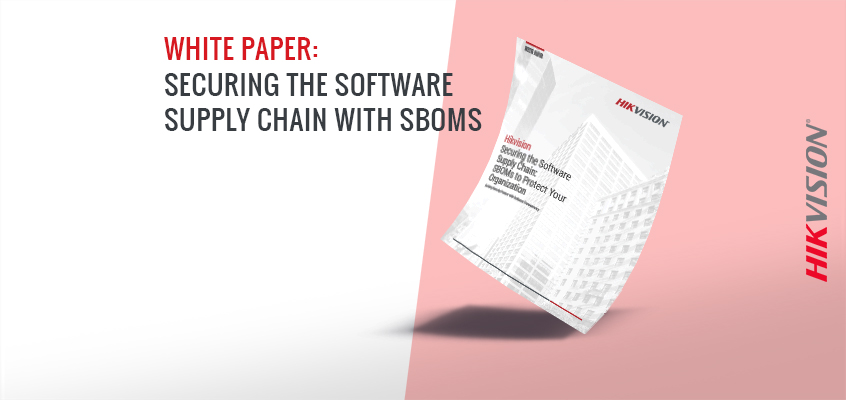Zero Trust & Software Bill of Materials (SBOM): Why They’re Mission Critical

When deployed and managed properly, SBOMs can provide a 360-degree view of an organization’s risk exposure to software supply chain threats and vulnerabilities
Zero Trust and Software Bill of Materials (SBOM) are mission-critical components of today’s cybersecurity. That’s why Hikvision has released a new technology white paper, “Securing the Software Supply Chain: SBOMs to Protect Your Organization,” available for download today at this link. In today’s blog, we’ll cover more about this important topic.
Technological innovation impacts our daily lives, and although it provides increased accessibility, efficiency and mobility, it also brings challenges for businesses and developers in mitigating dangerous cybersecurity and data privacy risks. Software supply chains are especially vulnerable since they host a large network of retailers, distributors and manufacturers, which creates a more at-risk margin of safety and a downstream effect with repercussions for interested stakeholders.
Supply chain threats can take many forms, such as malware embedded in software updates, flaws found in open-source code or malicious software signed with a stolen code-signing certificate. These kinds of attacks happen so often that we need ways of not only preventing the attacks but also ways to more quickly respond to them.
Zero Trust is a strategic architecture developed to prevent data breaches by eliminating the concept of trust from an organization’s network, specifically automatic trust. In a Zero Trust framework, every user has to request privileged access each time they need access to the system. In an effort to achieve Zero Trust security posture, organizations are implementing a Software Bill of Materials (SBOM) to further enable transparency into their software components and providers. Ultimately, maintaining an SBOM, a formal record of software containing details and supply chain relationships of various components used in building software, is critical for organizations to improve their security models and mitigate supply chain disruption.
The increased transparency SBOMs inherently possess enables an accelerated assessment of risks, vulnerabilities and dependencies in software. In the case of a crisis, like the recent Log4j vulnerability, SBOMs help organizations quickly identify active issues and minimize huge potential financial risks, damages in reputation and loss of productivity. Additionally, SBOMs help achieve compliance with government regulations and foster trust with customers.
When organizations properly deploy and manage SBOMs, they receive a 360-degree view of risk exposures, sometimes before threats are even active. This full-circle perspective provides valuable insight into components that might previously have required a degree of trust that could be eliminated. After all, businesses cannot afford to slack on security, when in September of 2021 the number of data breaches had already exceeded the number of events in all of 2020. Enabling a Zero Trust framework embedded with SBOMs makes technology safer throughout each segment of the supply chain lifecycle.
To learn more, download your copy of our new white paper here: “Securing the Software Supply Chain: SBOMs to Protect Your Organization.”
